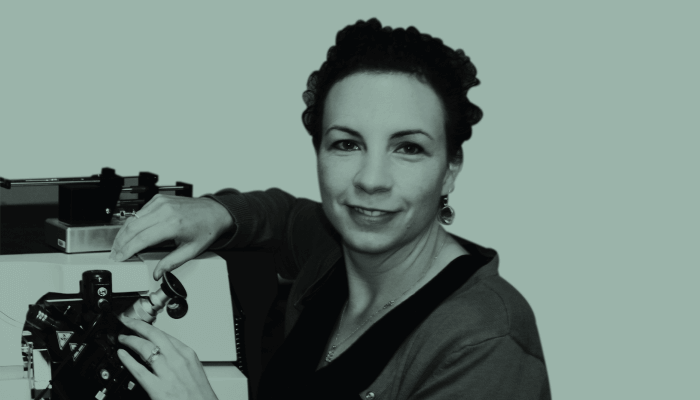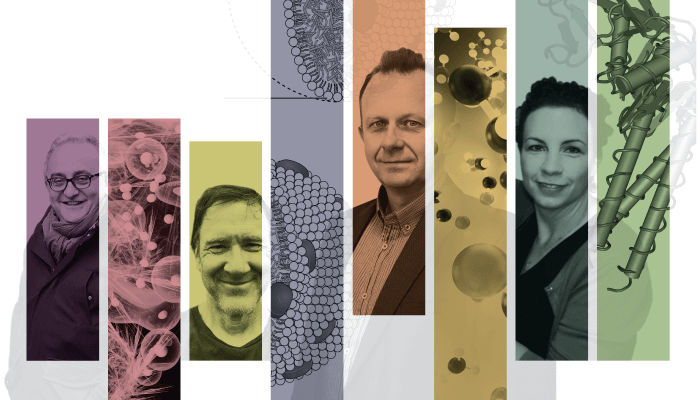We’ve come a long way since the Human Genome Project…
The mapping of our genetic self was an incredible milestone in scientific history. And, for omics, it was the Big Bang that gave birth to an ever-expanding universe of holistic molecular analyses. Today, that universe is almost unrecognizable from the one we inhabited at the turn of the millennium – and its associated applications are booming, too.
As for the use of the suffix -omics, there has been an equally impressive explosion – epigenomics, microbiomics, lipidomics, foodomics, interactomics, even CRAPomics – as countless scientists find a niche and dedicate their labs and their lives to digging ever deeper into nature’s molecular mysteries. We invited four such scientists (each a leading mind in their own omics discipline) to talk about the state of their field today.
How did we get here? What can we achieve with the tools available to us? And are we nearing a Big Yawn in the expansion we’ve witnessed thus far? Let’s see what our gurus had to say…
Professor, Laboratory of Foodomics, Spanish National Research Council, Madrid, Spain
My research has a core objective: to demonstrate that food can benefit our health in countless ways. A great aim in this is the investigation of revalorizing food by-products, including algae, plants and food waste. My main line of research for some years now has honed in on how these bioactive compounds could be applied to the treatment of colon cancer, and my group was the first to combine transcriptomics, proteomics and metabolomics to investigate bioactive food compounds in this context.

Claire: My interest in proteomics started as a PhD student working on phosphorylation-mediated cell signaling in Dundee. I believed (and still do) that proteomics can help us to better delineate and understand complex biological systems, and the ways in which proteins act – both individually and in concert – to regulate biological function.
Michal: Like Claire, it all started with my PhD. I joined Pavel Jandera’s lab in 1995, and we were fortunate to have the first benchtop LC-MS system in the Czech Republic. It was equipped with a single quadrupole mass analyzer, which is almost laughable today. One of my first tasks was to analyze reaction mixtures from biodiesel production (these complex samples contain tri-, di- and monoacylglycerols). It was then that I realized the beauty of lipid analysis. These species have regular increments per their individual classes, resulting in regular retention patterns and predictable m/z values. This is part of the reason that I decided to focus on lipids in biological systems, and – 25 years and a new name (lipidomics!) later – I consider this the best choice I ever made.
Alejandro: Other areas, such as biotech and pharma, have typically been the first to benefit from omics – that’s where the big money is, after all. Food science was always left behind. I found this hard to stomach (if you’ll pardon the pun), especially considering the gigantic impact food has on our lives. I introduced the concept of foodomics in 2009, with the aim of applying omics technologies to studies of food and nutrition. The ultimate aim is to improve food quality and safety, and to explore the relationship between food bioactivity and human health.
Gary: Unlike my friends above, I was never drawn to “omics” per se, but instead focused on the lack of information available regarding the role that metabolites play in so many areas of biology. Metabolomics, in my view, has turned out to be an ideal technology to address this problem.
Professor, Institute of Systems, Molecular & Integrative Biology, University of Liverpool, UK
I develop proteomics strategies to enhance our understanding of protein post-translational protein modifications, largely phosphorylation, in cellular regulation. We think that we understand a great deal about the roles of phosphorylation, but studies in vertebrates have focused almost exclusively on the phosphorylation of serine, threonine, and tyrosine. We recently found that at least six more of the 20 common amino acids are also phosphorylated in humans. Considering this, it’s clear that our job defining the functions of protein phosphprylation is far from over. There really isn’t an area of biological and clinical science that won’t benefit from proteomics, and I feel privileged to play a role in its progress.

Alejandro: I would say foodomics is still in its infancy. As I said before, it was only defined 12 years ago, so there’s much room for growth. Though foodomics itself hasn’t changed much throughout my career, the methods that we rely on certainly have. For example, early proteomics investigations relied on two-dimensional electrophoresis followed by image comparison, protein cutting from gels, trypsin hydrolysis, and sequencing by MALDI-TOF-TOF tandem MS. Now we can analyze the proteome of a biological system with a single injection by combining nano-LC and high-resolution MS with isotopic probes bound to hydrolyzed proteins.
Claire: Proteomics has changed considerably since I started in this field 20 years ago. Advances in chromatography instrumentation and column chemistry have dramatically improved sensitivity, partly because chromatographic resolution has focused MS instrument time. Combined with vast improvements in the speed and sensitivity of mass spectrometers, we are now able to identify and quantify changes in protein abundance in very small sample amounts – even to the single-cell level in some systems. Routine implementation of different forms of peptide fragmentation during tandem MS, ion mobility separation to complement (or replace!) chromatographic peptide separation, and better understanding of the chemical mechanisms driving peptide fragmentation have all improved the automated analysis of peptides and their post-translational modifications.
Gary: Metabolomics is on a tremendous growth streak. The trajectory of this growth today is higher than ever before. This is largely due to many different biological and therapeutic fields realizing the wealth of information that can be gleaned from metabolomic analyses. Whether it is fundamental biology, the microbiome, the exposome, therapeutics, or any of myriad other areas, metabolomics can add both mechanistic and functional information – or even identify metabolites that can alter phenotype. Lots has changed since I first got involved in LC/MS-based metabolomics 27 years ago!
Michal: Scientific knowledge evolves constantly and dramatically. Lipids were initially known for their roles as energy stores and building blocks of cellular and intracellular membranes. Today, however, we know that they also play roles in countless other biological processes, including cell signaling.
The lipidomics toolbox has needed to expand rapidly to study the crucial roles of lipids. We have, for example, benefited from enormous improvements in analytical instruments and bioinformatics. I was happy with HPLC coupled to a single quad spectrometer 25 years ago. Today, ultra-high, ultra-fast performance is ubiquitous; examples include qTOF mass spectrometers with ultra-fast scan rates, the ultra-high-resolution Orbitrap, and UHPLC and UHPSFC. These powerful configurations quickly generate tremendous amounts of data, putting pressure on the bioinformatics processing and statistical evaluation. Indeed, bottlenecks tend to present themselves on either side of such impressive systems, with both sample preparation and data analysis demanding further attention.
Professor & Director of The Scripps Center for Metabolomics, The Scripps Research Institute, San Diego, California, USA
We aim to create technologies that facilitate identification of metabolites that can alter biological systems (hydrocortisone’s immunosuppressive function is a great example) – I like to call such efforts “activity metabolomics.” From a technical perspective, we have achieved this through our development of XCMS and METLIN. XCMS was the first chromatographic MS platform that allowed correction of the nonlinear alignment of chromatographic and MS data, while METLIN was the first database of tandem MS data – it now hosts over 850,000 molecular standards.

Gary: The sheer number of tools that have been created to support metabolomics is likely the most impressive collective feat. A new technological (typically informatic) tool comes out almost every week, and these developments are helping the field to accelerate at an incredible rate. I am personally fond of my own team’s success in developing the XCMS/METLIN platform, which facilitates metabolite and chemical identification. METLIN now boasts over 850,000 molecular standards, each with experimental tandem MS data. This is (I hope) helping move the field forward, especially combined with other technological achievements.
Claire: Scientists outside of omics may think of proteomics as a “plug and play” technology: put the sample into a (black) box and out comes a list of identified and quantified proteins. Though this isn’t really the case (much expertise is required for good sample preparation, instrument setup and maintenance, experimental design, data handling, and so on…), the fact that many people perceive proteomics to be routine indicates that this technology has come of age!
As for specific points of excitement, I don’t think I could highlight a single one, but single-cell proteomics is up there! Our ability to quantify proteins at this level allows us to understand heterogeneity – a crucial factor in studying, for example, signal transmission across cell populations and disease. We can also explore proteins from species that we don’t have a genome for and examine combinations of post-translational modifications via top-down proteomics approaches. “Native” MS (to understand protein complexes and the conformational dynamics of proteins subject to ligand binding or protein modification) can be used to conduct particularly powerful protein analyses.
Alejandro: The greatest achievement in foodomics is a tricky question, as we are still building our relatively new discipline. We have a long way to go to catch up with more established omics fields like genomics and proteomics. So, for now I would say: let’s wait and see! But some great examples of the potential of our field can be found in foodomics studies looking at the antiproliferative activity of some food ingredients against colon cancer both in vitro and in vivo; for example, my group found that the green extraction and concentration of specific compounds (and the elimination of other not so positive natural compounds) from rosemary creates a product with such effects. Foodomics also helps corroborate the work that goes into ensuring the safety and quality of food commodities.
Professor, Faculty of Chemical Technology, University of Pardubice, Czech Republic
I always seek the best analytical performance possible. In our laboratory, we don’t like to use “features” or “tentatively identified molecules.” We strongly prefer to report lipid species confidently – identified based on the retention times, accurately determined masses, and fragmentation behavior. The result: false identification rates close to 0 percent. Our approach goes against the mainstream in omics, but is a powerful force in my team’s application of lipidomics to solving problems in human disease and beyond.

Michal: I am proud of my group’s achievements in oncolipidomics. We found that the lipid profiles (in blood) of subjects with various types of cancer are distinct – and multivariate analyses could differentiate cases from controls with over 90 percent accuracy. Our most convincing results concerned a large set of pancreatic cancer samples (we were recently granted a European patent for our pancreatic cancer diagnostic method), but similar dysregulation is also apparent in many other cancers. We are now working on the translation of our diagnostic method into clinical practice. If successful, it would be a real breakthrough in pancreatic cancer screening and, hopefully, other cancer types as well!
Alejandro: Coining the term foodomics was certainly a proud moment. And yet, nothing would have come of it without the positive reception among colleagues – and the incredible work they conduct in this area. It also makes me very happy to think about how many (mostly young) researchers have been prepared for life as capable professionals following time in our lab!
Gary: I feel the same way, Alejandro. My answer is simply the number of individuals who came to my lab and left for exciting metabolomic careers across academia and industry!
Claire: Demonstrating the true extent of “non-canonical” phosphorylation in human cells (my team used a novel analytical pipeline to show that protein phosphorylation in human cells is much more diverse that anybody previously thought) and the excitement that this has created within the cell signaling community is one of my proudest proteomics moments. It took a number of years to get a working method, given how unstable atypical phosphorylation events are under standard proteomics conditions, and I am incredibly proud of the students and postdocs that contributed to this project.
Also, working with other members of the COVID-19 MS coalition, we have developed robust MS assays for the simultaneous screening of both COVID-19 and winter flu in saliva samples. These are currently being evaluated in clinical hospital labs. Exploiting the sensitivity and specificity of targeted MS assays that can be multiplexed for rapid screening of diverse markers of infection or disease in this way will have significant societal benefit.
Claire: We have this discussion quite often in our lab, and I personally think that proteomics in 20 years will probably not be conducted using today’s classical LC-MS workflows. Proteomics (or rather bottom-up proteomics) has an issue that stems from the inference of protein identities from peptide identification using tandem MS.
Problems with “missing peptides” and our inability to fully characterize sites of covalent modifications mean that we don’t currently define the large numbers of proteoforms present in systems. Current instrumentation also struggles with the robust separation of large (50 kDa or bigger) proteins that may differ only by the addition of a number of small chemical entities (methyl, phosphate, and sulfate groups, for example), and we are still unable to completely fragment these proteins inside the mass spectrometer and interpret these data. The sequential way in which we typically analyze samples means that high-throughput “complete” protein characterization remains outside of our current capabilities. Overcoming this limitation will be a great focus for the next 20 years, and will likely require radical new ways of thinking about our technology and data analysis tools.
Gary: If the question is “Where would I like to see the field in 20 years’ time?” then the answer is pretty straightforward… I’d like to see metabolomic tools with a dynamic range sufficient to comprehensively quantify and identify all metabolites – from the most ubiquitous to least common.
The instrumental challenges are rather daunting, though. A dynamic range improvement from the current state of the art (six orders of magnitude) to ~12 orders of magnitude would be needed. And maybe 20 years is not long enough!
The identification challenge is also daunting. PubChem lists 93 million molecules in its existing chemical space; identifying these rapidly and with stereoisomer precision is almost impossible. Major leaps will be needed regarding the size of our own METLIN database and technologies for high-sensitivity stereoisomer assessment. Again, 20 years may not be enough…
Alejandro: In 20 years, we will still be trying to comprehend the huge complexity of interactions between food ingredients and our body! I anticipate a deeper understanding of the microbiome by then, but so-called “personalized nutrition” will take longer still. I would say that overcoming current limitations in data treatment is the main challenge ahead, including the integration of the huge amounts of data generated at different levels of expression (genomics, transcriptomics, proteomics, metabolomics by existing analytical techniques) and subsequent transformation of this data into useful biological information.
Michal: We have made significant progress in lipidomic quantitation, but we aren’t perfect. In the words of my coworker, Denise Wolrab: “It seems that all labs have troubles and, even for the so-called leading groups in lipidomics, it is far from perfect. Improvements are necessary.” Harmonizing our protocols so that different labs can report comparable results with high confidence and structural detail represents a crucial step. Other hurdles we must overcome are the identification of specific lipids’ roles in metabolic pathways and ability to merge information from separate omics disciplines in a systems biology approach – a huge challenge for bioinformaticians.
In addition, the alterations in lipid metabolism occurring across numerous diseases (cardiovascular and liver diseases, cancer, Alzheimer’s, and so on) remain poorly understood. There is much work to be done by the lipidomic community on this front! As methodological and instrumental improvements materialize, we will also be able to dig deeper into structural details with MS and ion mobility approaches.





